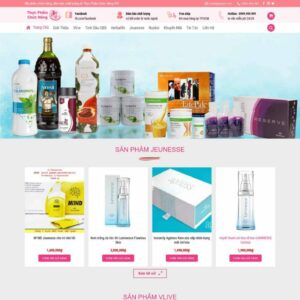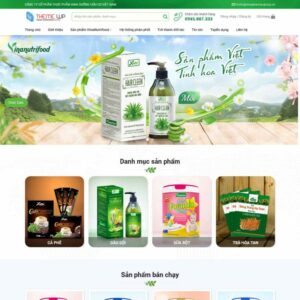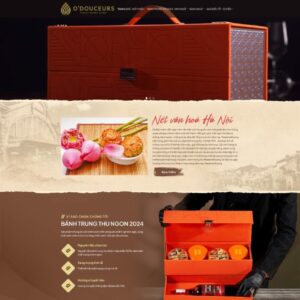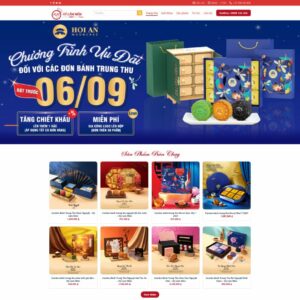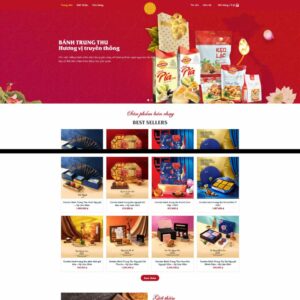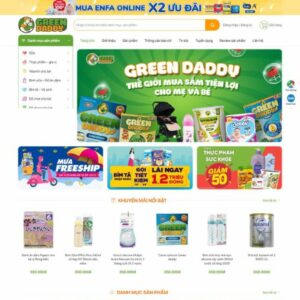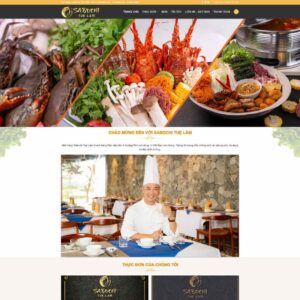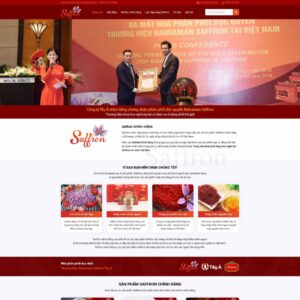
The functional food sales WordPress theme 13 features a modern design, easy to use for the Sales, Business, Food, and Health sectors.
The WordPress theme for selling functional foods is diverse for businesses, specializing in health and medical categories, helping to effectively boost sales growth.
The WordPress theme for selling ginseng helps you create a unique website with customizable colors, fonts, and layouts, perfect for your brand.
The Gold Shop WordPress Theme 1 is optimized for user experience, features a beautiful mobile interface, suitable for categories like Sales and Food.
Discover our professional WordPress theme for mooncake sales. SEO optimized for the Sales and Food categories, effectively boosting sales.
WordPress theme for mooncake sales 2, suitable for food stores, enhancing the online shopping experience and optimizing revenue.
Discover our professional WordPress theme for mooncake sales, optimized for the Sales and Food categories, effectively boosting revenue.
The Milk 2 WordPress theme helps you create a diverse product list for milk, showcasing features and benefits. Easily manage orders and online payments.
WordPress theme for milk tea ingredient shop 2 helps you create a professional website, attract customers, and boost sales in the milk tea industry.
The Mother and Baby 3 WordPress theme allows easy customization without coding. Suitable for sales and food, perfect for your brand.
The WordPress theme for restaurant 4 features a modern design, SEO optimization, and includes categories like Sales, Restaurant, Hot Theme, and Food, making it perfect for the culinary industry.
The WordPress shop theme for selling saffron helps create a professional retail website, effectively showcasing saffron products for your business.
1. Benefits of Designing a Professional Food Website
Designing a professional food website helps businesses promote products, quickly reach potential customers, and increase sales. An SEO-friendly website enables businesses to appear on the first page of search engines, attracting a large customer base. Additionally, the website provides detailed information about products, production processes, food safety quality, and promotional policies, helping customers feel secure and easily place orders.
2. Essential Features for a Food Website
A food website needs to integrate key features to provide the best online shopping experience for customers. The website’s interface should be visually appealing, aligned with the food theme, and optimized to meet information-seeking and ordering needs.
2.1. Attractive, Eye-Catching Interface
The food website’s interface should be fresh, using vibrant colors like green, red, and orange to create an appetizing and attractive feel. Product images should be of high quality, clearly showcasing freshness and appeal. The homepage layout should logically organize categories such as: featured products, product categories, promotions, and order contact information.
2.2. Diverse Product Category System
The website should have a clearly categorized product system divided into groups like: fruits and vegetables, meat and fish, seafood, ready-to-eat food, beverages, and spices. Each product should have a detailed information page that includes: images, product descriptions, nutritional content, usage instructions, pricing, and promotional programs. Providing comprehensive information helps customers understand products better and make informed purchasing decisions.
2.3. Integration of Online Ordering Feature
The online ordering feature is crucial for a food website. Customers can easily select products, quantities, payment methods, and place orders directly on the website. This feature not only saves customers time but also helps businesses efficiently manage orders, optimizing the sales process.
3. SEO Standard Design Process for Food Websites
Designing an SEO-friendly food website is vital for businesses to reach customers and enhance operational efficiency. A standard design process will create a better user experience and help the website rank higher in search engines.
3.1. Ideation for Interface and Features
The food website’s interface should be designed based on the product characteristics and brand style. The design approach should focus on freshness, safety, and quality. Functions like viewing products, placing orders, and contacting should be designed to be simple and user-friendly. Call-to-action (CTA) buttons like “Add to Cart,” “Order Now,” and “Contact Us” should be prominently placed to encourage customer interaction.
3.2. Build Engaging, Quality Content
The website content should focus on detailing products, production processes, food safety certifications, and promotional programs. Use related keywords like “food website design” and “online food shopping” naturally within the content to optimize SEO. Sharing articles about nutrition, food preservation tips, and recipes can attract and retain customers, enhancing brand credibility.
3.3. On-Page SEO Optimization for Food Websites
Optimize SEO elements such as title tags, meta descriptions, headings, URLs, and ALT tags for images on the website. Use internal linking between product pages and shared articles to increase connectivity and assist customers in their information search. Optimize page load speed and ensure mobile-friendliness to improve search engine rankings and enhance user experience.
4. Modern Trends in Food Website Design
Current trends in food website design focus on user experience, integrating modern features, and optimizing interfaces.
4.1. Fresh Interface Design Emphasizing Product Images
The food website interface should be designed fresh, focusing on displaying clear and lively product images. Use colors like green, yellow, and red to create an appetizing feel that stimulates customers’ appetites. A clear layout helps customers easily search for and select products quickly.
4.2. Integration of Product and Production Process Videos
Incorporating videos that introduce products, production processes, and cooking methods can make the website more vibrant and engaging. Videos help customers better understand products and build trust in quality and food safety, thus encouraging purchase decisions.
4.3. Mobile Optimization
The food website must be compatible with all devices like computers, phones, and tablets, allowing customers to access and shop anytime, anywhere. This enhances user experience and increases customer reach, especially for those frequently using their phones to search for and purchase food online.
5. Choosing a Reputable Food Website Design Agency
To have a professional food website, businesses should select a reputable design agency with experience in e-commerce website design. The agency should provide comprehensive design, programming, and SEO optimization services to ensure the website operates effectively, attracts customers, and enhances the shopping experience.
Conclusion
Designing an SEO-friendly food website is an optimal solution to help businesses reach customers, promote products, and increase sales. Invest in website design today to build a reputable brand and achieve sustainable growth in the food business.
Related Keywords:
- Food website design
- Online food sales website
- E-commerce food website design
- Online food shopping
